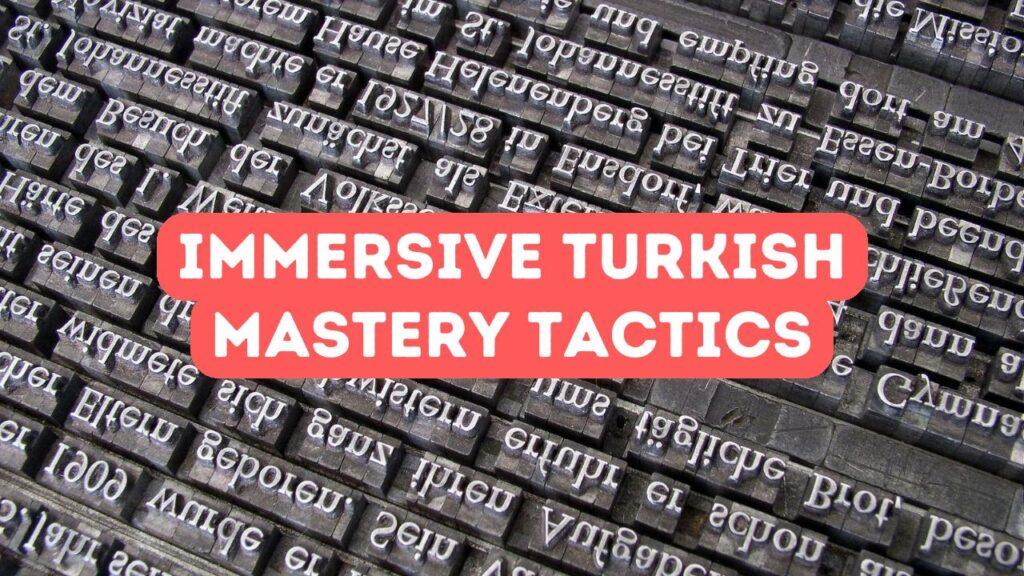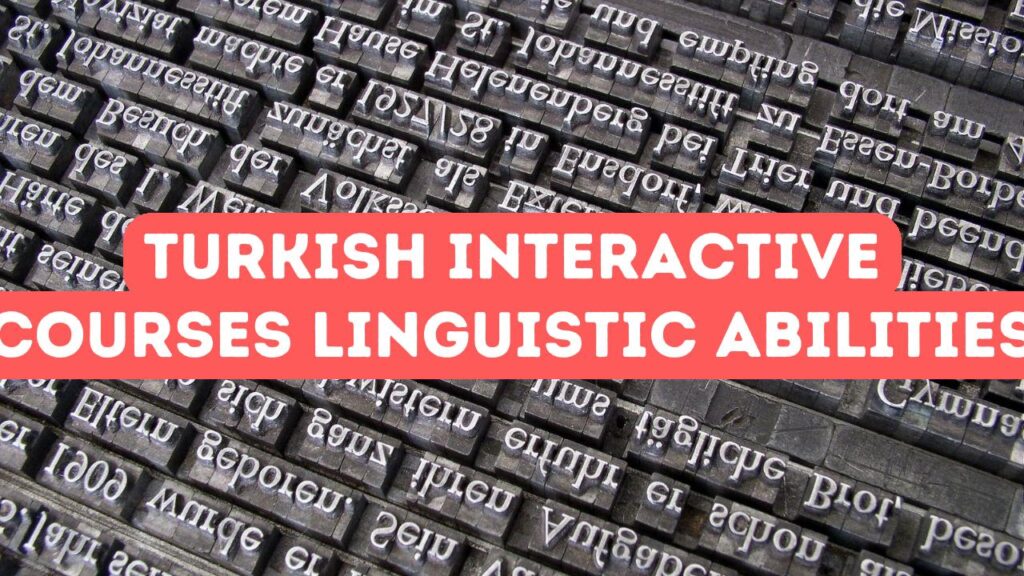Understanding the Structure of Turkish: A Linguistic Overview
One pervasive misconception about Turkish is that its structure is overwhelmingly complex and difficult for non-native speakers to learn. In reality, Turkish is characterized by its agglutinative nature, meaning that it builds words by stringing together affixes to a root word. This systematic and logical framework of affixation creates consistency in how words are formed, enabling a more predictable learning process. Unlike English, with its heavy reliance on idiosyncratic word forms and exceptions, Turkish grammar adheres to a set of clear rules with fewer irregularities. Rather than perceiving its structure as a barrier, learners should view the agglutinative aspect of Turkish as a tool that, once understood, provides a blueprint for forming coherent sentences and expressing complex ideas systematically.
Furthermore, Turkish employs vowel harmony, an elegant and integral feature that enhances its rhythmic flow and consistency. Vowel harmony dictates that certain vowels within a word conform to the characteristics of the first vowel, streamlining pronunciation and word construction. As learners become accustomed to this phonological rule, they encounter fewer ambiguities in spoken and written communication. This aspect of the language contrasts starkly with the more unpredictable vowel usage in English, and once mastered, it greatly simplifies the acquisition of new vocabulary and grammatical structures in Turkish. The predictability afforded by vowel harmony is a testament to the language’s logical underpinnings, offering learners a clear path to proficiency.
Building on these linguistic foundations, Turkish also operates with a subject-object-verb (SOV) word order, which, while different from the subject-verb-object (SVO) pattern familiar to English speakers, is actually the most common sentence structure globally. This lends Turkish a degree of universality, which can aid learners who speak other SOV languages. Furthermore, Turkish is largely free of gendered nouns, a feature that can reduce memorization and simplify the process of language acquisition. By grasping these structural aspects—agglutination, vowel harmony, and sentence order—learners can navigate through Turkish with an analytical approach, recognizing patterns and internalizing the rules that give Turkish its unique character, thereby demystifying the process of learning this rich and expressive language.
Mastering Turkish Pronunciation: Strategies and Techniques
One prevalent misconception about the Turkish language pertains to its pronunciation, with many beginners mistakenly believing it to be exceedingly complex or completely alien to English speakers. In reality, Turkish is a phonetically consistent language, meaning each letter consistently corresponds to a single sound, which largely simplifies the process of learning pronunciation. Moreover, Turkish sounds are not as foreign as one might expect; a considerable number of phonemes have direct equivalents in English. Beginners can leverage this predictability and familiarity by utilizing strategies like phonetic transcription to better visualize Turkish words, regular listening and repetition exercises using audio resources to attune their ears to Turkish prosody, and practicing with native speakers to accurately capture the intonation and rhythm of the language. Engaging with these techniques not only aids in mastering clear and accurate pronunciation but also enhances overall comprehension and communication in Turkish.
Continuing from the aspect of consistency in Turkish phonetics, beginners should also take stock of distinctive Turkish pronunciation features that do require attention. One such feature is vowel harmony, a rule-based system that affects how vowels within a word relate to one another, contributing to the euphonic flow of the language. By embracing the logic behind vowel harmony and practicing through targeted drills, learners can significantly improve their pronunciation. Another strategy involves the conscious articulation of sounds that are less common or absent in English, such as the ‘ç’ (pronounced like ‘ch’ in ‘church’) or the ‘ğ’ (a soft g, often extending the preceding vowel). It is vital for learners to observe these nuances through careful listening and to repeat after native speakers, as this active participation allows for a nuanced understanding of Turkish phonemics that goes beyond the surface-level similarities to English.
To round out one’s mastery of Turkish pronunciation, it is crucial to integrate the strategies previously mentioned into a consistent and immersive learning routine. Regular interaction with authentic Turkish media, such as music, podcasts, or movies, can provide a rich context for understanding how native speakers blend rhythm, stress, and intonation in everyday speech, fortifying learners’ ability to mimic and internalize these patterns. Pairing these listening experiences with speaking exercises, such as shadowing—wherein the learner simultaneously or immediately repeats phrases spoken by a native speaker—helps solidify proper pronunciation habits. Above all, patience and persistence are key; consistent practice will lead to incremental improvements, transforming initially challenging sounds into familiar elements of the learner’s linguistic repertoire. By combining analytical learning techniques with immersive exposure, students of Turkish can achieve a profound and intuitive grasp on the subtlety and music of the language’s pronunciation.
Beyond Language: Cultural Nuances in Turkish Communication
A pervasive misconception about the Turkish language is that mastering its grammar and vocabulary will suffice to communicate effectively. However, understanding Turkish extends well beyond the confines of conventional language learning; it requires an appreciation for the nuanced tapestry of culture that is tightly woven into every exchange. Politeness and formality are enshrined in Turkish communication, discernible in the use of honorifics and varying levels of formality depending on the relationship and context. A simple greeting can reveal the dynamics of respect, hierarchy, and familiarity, emphasizing the importance of cultural awareness. Without this vital cultural competency, beginners may find themselves not only linguistically but also socially misaligned, underscoring the need to study Turkish with an eye for the cultural undercurrents that define true fluency.
In addition to honorifics and formalities, non-verbal communication in Turkish culture holds significant weight, and it can be as communicative as spoken words. Body language, hand gestures, and facial expressions are intricately linked with verbal speech, often conveying emotions and intentions more distinctly than words alone. Beginners need to be attuned to these silent messages to avoid misunderstandings; a nod, for instance, can sometimes mean disagreement, contrary to many Western interpretations. Moreover, the concept of keyif – a uniquely Turkish term expressing a state of contentment and leisure – exemplifies the cultural priority of enjoying life’s moments, and it reflects in the relaxed pacing of conversations. Failing to recognize and respect these cultural subtleties can lead to unintended offense or misjudgment, making cultural literacy as vital as linguistic proficiency when engaging with Turkish speakers.
Finally, to truly dispel misconceptions about the Turkish language, one must also understand its idiomatic expressions and proverbs, which are steeped in historical and cultural references. These sayings often encapsulate complex ideas and wisdom that cannot be directly translated but require cultural context to grasp their full meaning. For instance, the phrase Göz var nizam var serves as a reminder that presence results in orderliness, reflecting the communal value of oversight and collective responsibility. Beginners learning Turkish should strive to immerse themselves in the rich tapestry of local literature, films, and everyday discourse to internalize these cultural nuances. By doing so, they unlock a deeper, more empathetic understanding of the language’s soul, which goes far beyond mere words and grammar, leading to genuine communication and enriched interpersonal connections with Turkish speakers.







